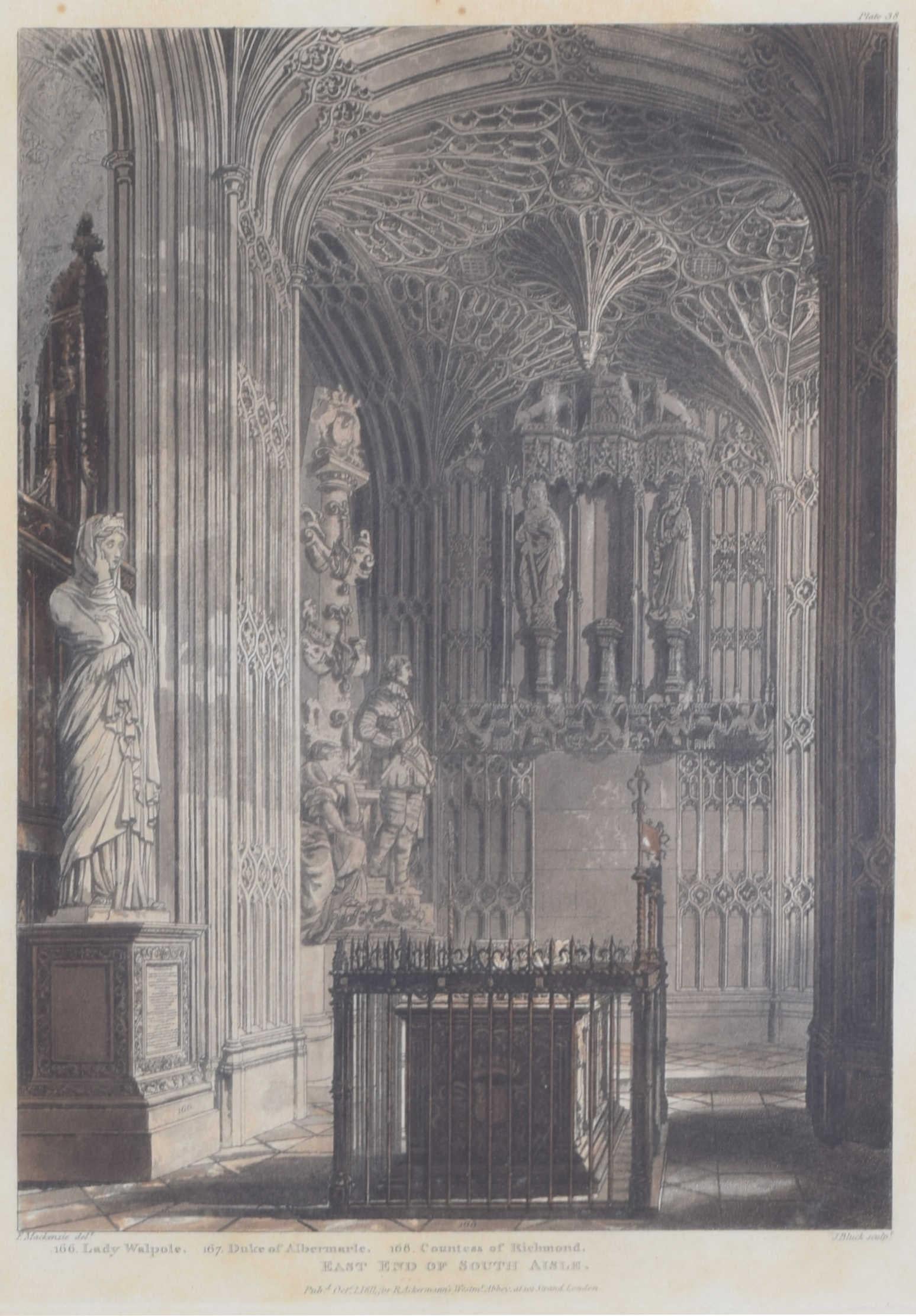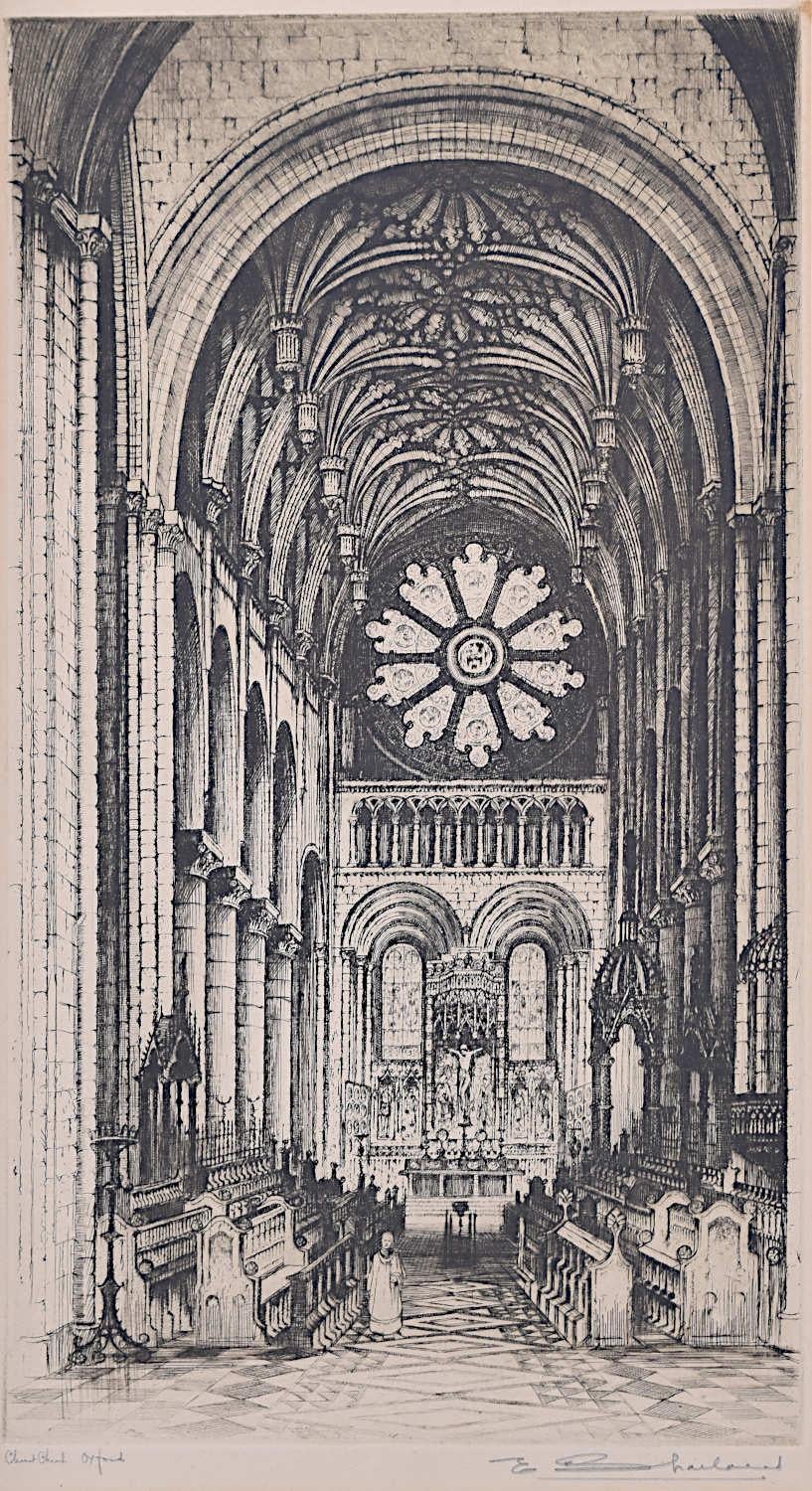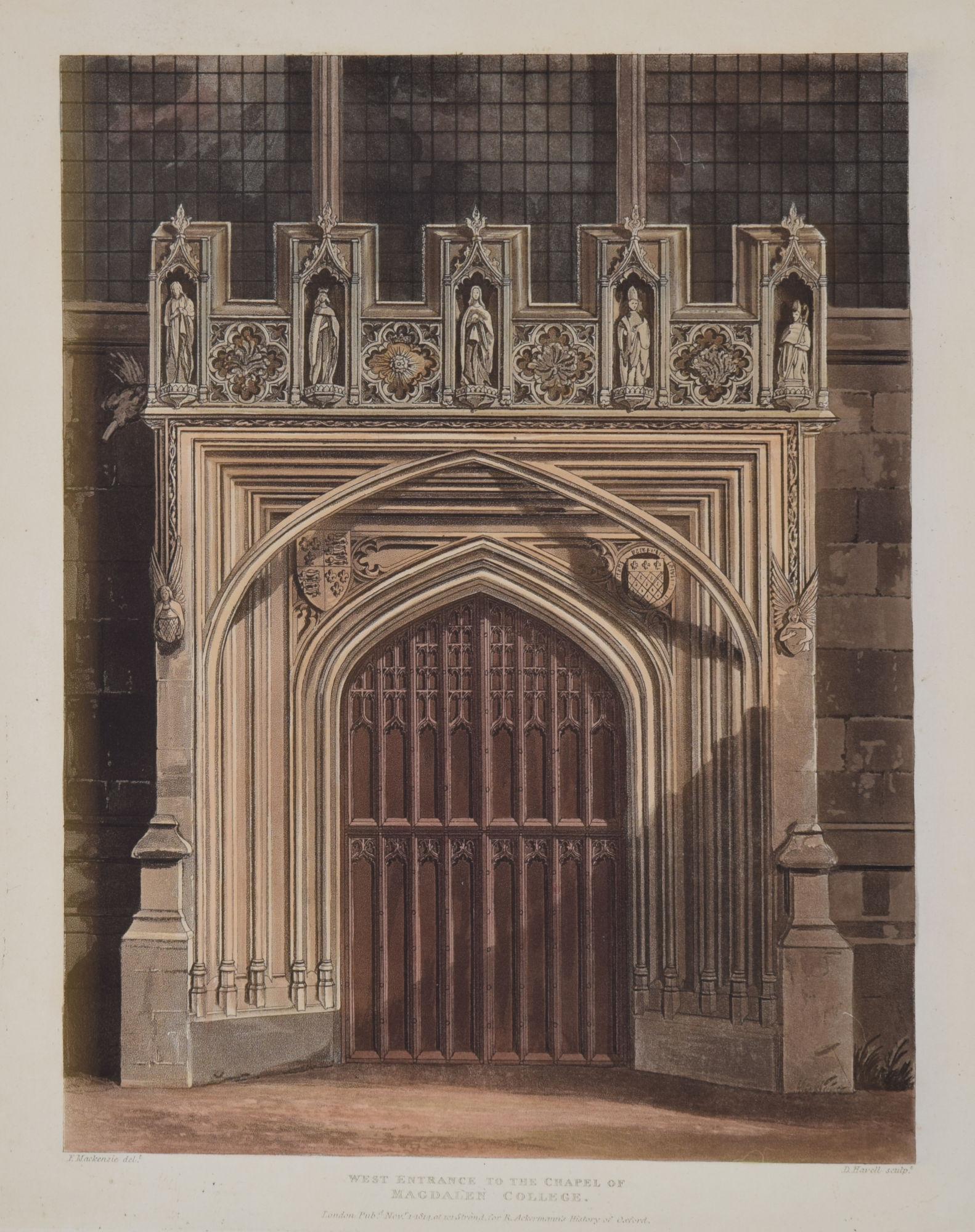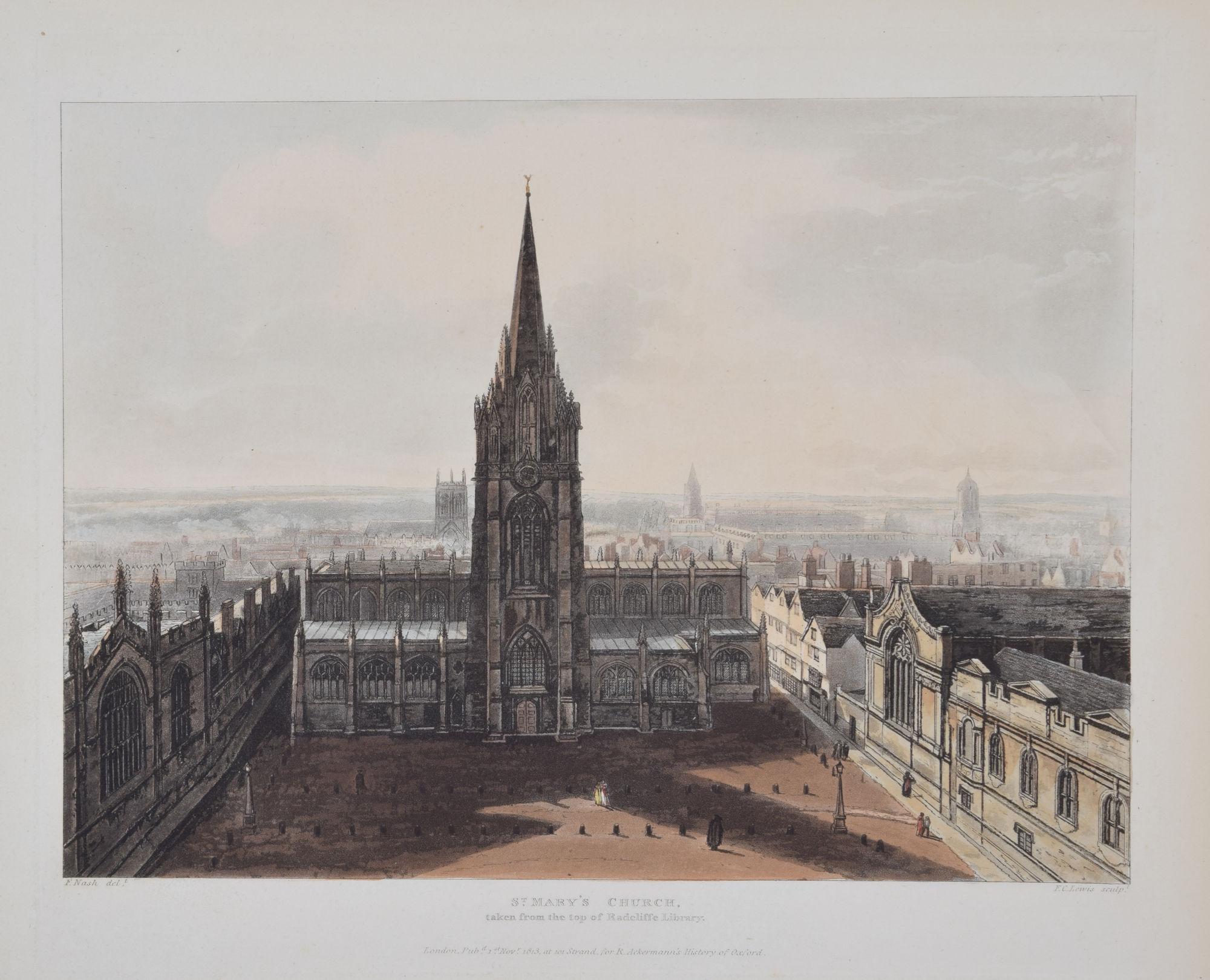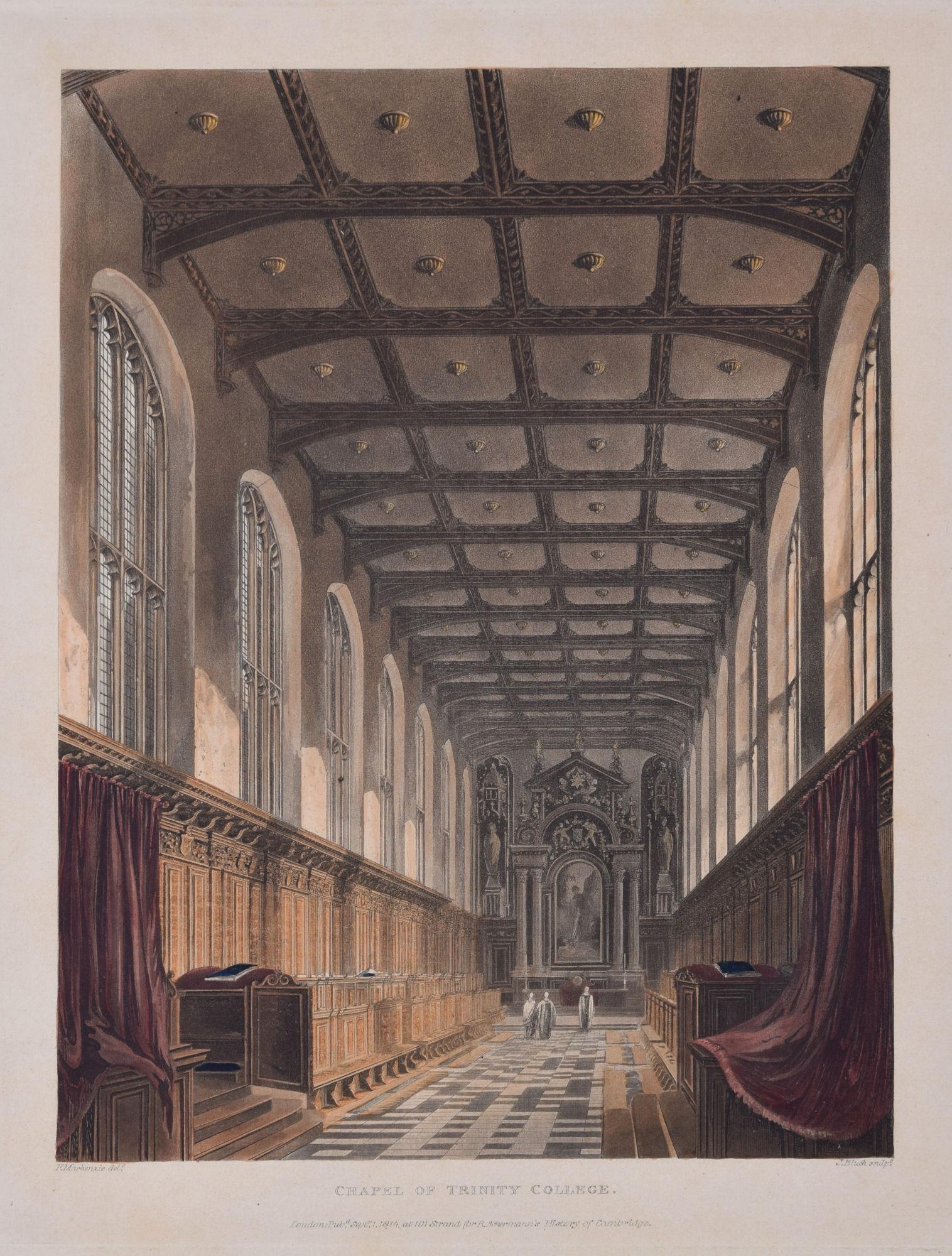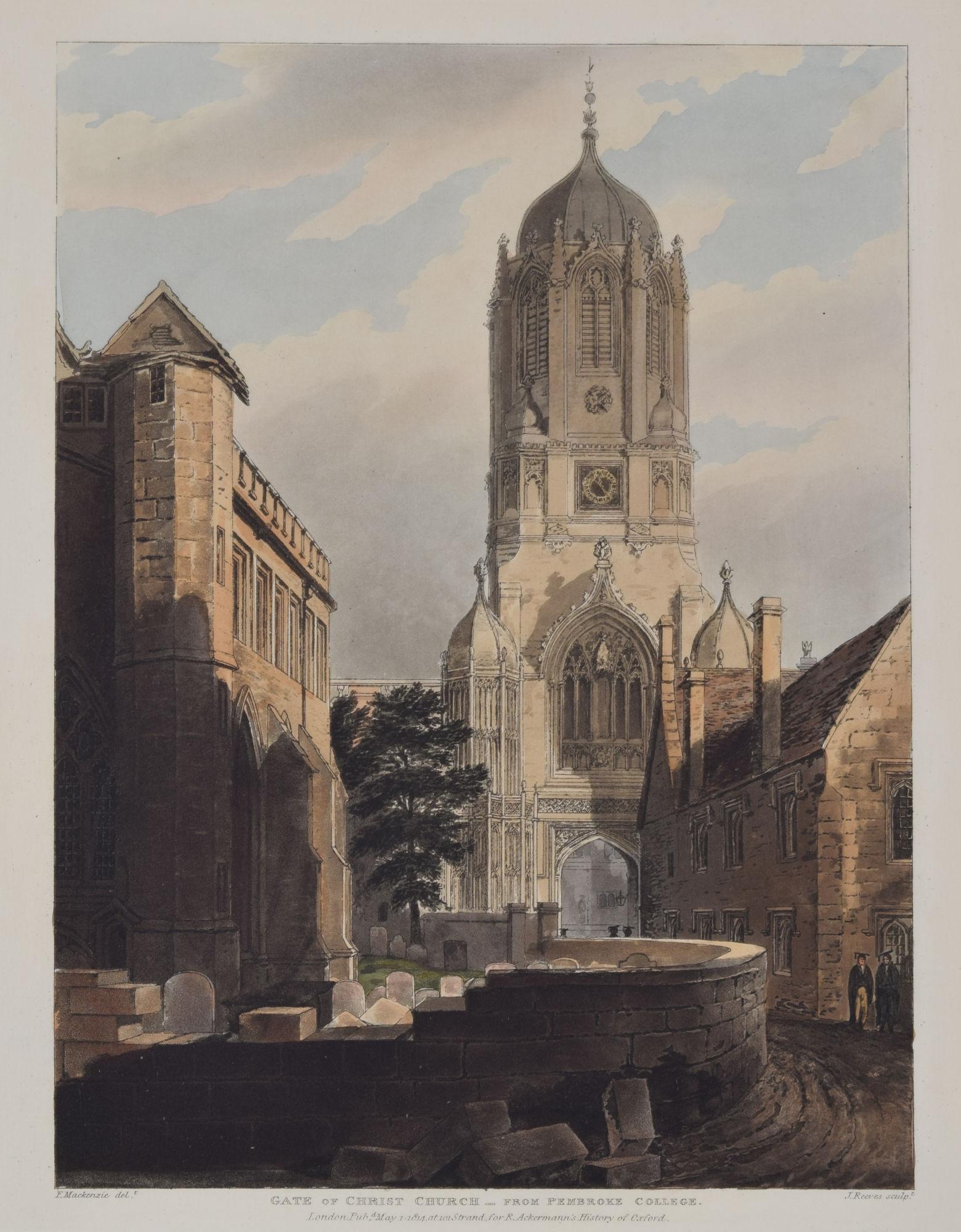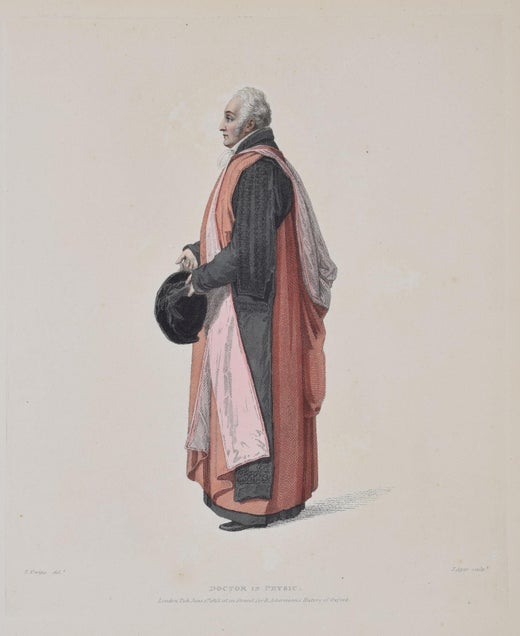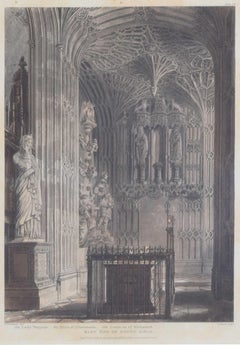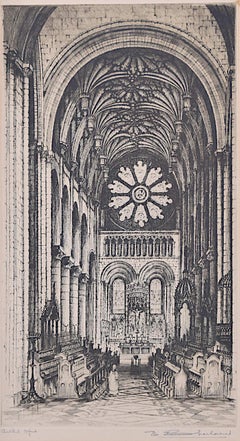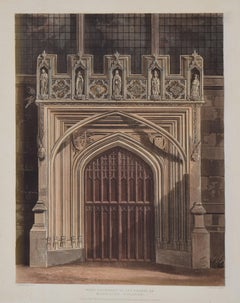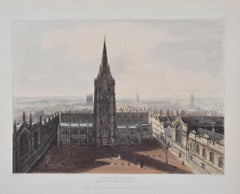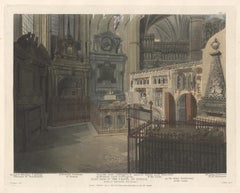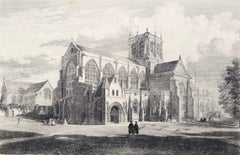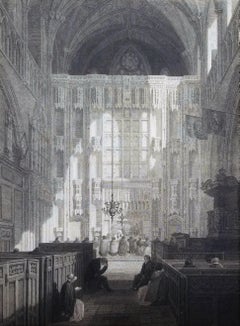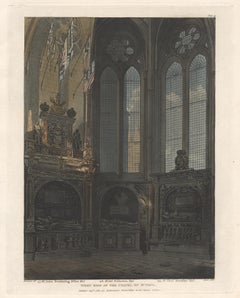Items Similar to Christ Church Cathedral, Oxford interior engraving by Bennett after Westall
Want more images or videos?
Request additional images or videos from the seller
1 of 7
Rudolph AckermannChrist Church Cathedral, Oxford interior engraving by Bennett after Westall1814
1814
$440.45
£320
€375.09
CA$601.30
A$668.92
CHF 350.66
MX$8,174.09
NOK 4,465.20
SEK 4,203.37
DKK 2,799.92
Shipping
Retrieving quote...The 1stDibs Promise:
Authenticity Guarantee,
Money-Back Guarantee,
24-Hour Cancellation
About the Item
To see our other Oxford and Cambridge pictures, including an extensive collection of works by Ackermann, scroll down to "More from this Seller" and below it click on "See all from this Seller" - or send us a message if you cannot find the view you want.
William James Bennett (1787 - 1844) after William Westall (1781 - 1850)
Christ Church Cathedral (1814)
Aquatint with original hand colouring
19 x 26 cm
Published by Rudolph Ackermann (1764 - 1834).
An interior of Christ Church's magnificent Cathedral. Engraved for Ackermann's 'A History of the University of Cambridge, Its Colleges, Halls and Public Buildings'.
William James Bennett was a British-born painter and engraver. He studied at the Royal Academy Schools and was a pupil of Westall's. He was a founder member of the "Associated Artists in Watercolour" in 1808, and twelve years later was elected an Associate of the Water-Colour Society. He went to the United States around 1826, and became a member of the National Academy of Design at New York in 1828, where he exhibited watercolour landscapes and seascapes, and engravings. In the 1830s and early 1840s he produced a series of aquatints of topographical views, from both his own paintings and those of others.
William Westall was a British landscape artist. He was born in Hertford and enrolled at the Royal Academy schools in 1799. He later became the draughtsman for a voyage to Australia and the South Seas. After being shipwrecked, he travelled to Canton in China and to India, staying in Bombay for several months. He returned to England in 1805 but later set off for Madeira and Jamaica. He became a member of the Society of Painters in Water Colours (1811) and an associate of the Academy (1812). Following a mental breakdown, he regularly visited the Lake District and published ‘Views of the Valley and Vale of Keswick’ (1820). His series of aquatints of the Thames, the great universities, and England's public schools for Ackermann are among his most popular works.
Rudolph Ackermann was an Anglo-German bookseller, inventor, lithographer, publisher and businessman. In 1795 he established a print-shop and drawing-school at 96 Strand. Here Ackermann set up a lithographic press and began a trade in prints. He later began to manufacture colours and thick carton paper for landscape and miniature painters. Within three years the premises had become too small and he moved to 101 Strand, in his own words "four doors nearer to Somerset House", the seat of the Royal Academy of Arts. Between 1797 and 1800 Ackermann rapidly developed his print and book publishing business, encompassing many different genres including topography, caricature, portraits, transparencies and decorative prints.
- Creator:Rudolph Ackermann (1764 - 1834)
- Creation Year:1814
- Dimensions:Height: 7.49 in (19 cm)Width: 10.24 in (26 cm)
- Medium:
- Movement & Style:
- Period:
- Framing:Framing Options Available
- Condition:Generally very good - some wear and staining to margins which will be hidden under mount and a couple of spots.
- Gallery Location:London, GB
- Reference Number:1stDibs: LU795315149322
Rudolph Ackermann was an Anglo-German bookseller, inventor, lithographer, publisher and businessman. In 1795 he established a print-shop and drawing-school at 96 Strand. Here Ackermann set up a lithographic press and began a trade in prints. He later began to manufacture colours and thick carton paper for landscape and miniature painters. Within three years the premises had become too small and he moved to 101 Strand, in his own words "four doors nearer to Somerset House", the seat of the Royal Academy of Arts. Between 1797 and 1800 Ackermann rapidly developed his print and book publishing business, encompassing many different genres including topography, caricature, portraits, transparencies, and decorative prints.
About the Seller
4.8
Vetted Professional Seller
Every seller passes strict standards for authenticity and reliability
Established in 2014
1stDibs seller since 2017
352 sales on 1stDibs
Typical response time: 2 hours
- ShippingRetrieving quote...Shipping from: London, United Kingdom
- Return Policy
Authenticity Guarantee
In the unlikely event there’s an issue with an item’s authenticity, contact us within 1 year for a full refund. DetailsMoney-Back Guarantee
If your item is not as described, is damaged in transit, or does not arrive, contact us within 7 days for a full refund. Details24-Hour Cancellation
You have a 24-hour grace period in which to reconsider your purchase, with no questions asked.Vetted Professional Sellers
Our world-class sellers must adhere to strict standards for service and quality, maintaining the integrity of our listings.Price-Match Guarantee
If you find that a seller listed the same item for a lower price elsewhere, we’ll match it.Trusted Global Delivery
Our best-in-class carrier network provides specialized shipping options worldwide, including custom delivery.More From This Seller
View AllWestminster Abbey South Aisle engraving by John Bluck for Ackermann
Located in London, GB
To see our other Oxford and Cambridge pictures, including an extensive collection of works by Ackermann, scroll down to "More from this Seller" and below it click on "See all from this Seller" - or send us a message if you cannot find the view you want.
John Bluck (early 19th century) after Frederick Mackenzie (1788 - 1854)
East End of South Aisle, Westminster Abbey (1812)
Hand-coloured aquatint
31 x 24 cm
Published by Rudolph Ackermann...
Category
1810s Realist Prints and Multiples
Materials
Aquatint
Christ Church Cathedral Oxford etching E W Sharland print College University
Located in London, GB
To see our other views of Oxford and Cambridge, scroll down to "More from this Seller" and below it click on "See all from this Seller" - or send us a message if you cannot find the view you want.
Edward W Sharland (1884-1967) - British
Christ Church Cathedral...
Category
1920s Realist Interior Prints
Materials
Etching
Chapel of Magdalen College, Oxford engraving by Havell for Ackermann
Located in London, GB
To see our other Oxford and Cambridge pictures, including an extensive collection of works by Ackermann, scroll down to "More from this Seller" and below it click on "See all from th...
Category
1810s Realist Prints and Multiples
Materials
Aquatint
St Mary's Church, Oxford engraving by Lewis after Nash for Ackermann
Located in London, GB
To see our other Oxford and Cambridge pictures, including an extensive collection of works by Ackermann, scroll down to "More from this Seller" and below it click on "See all from this Seller" - or send us a message if you cannot find the view you want.
Frederick Christian Lewis (1779 - 1856) after Frederick Nash (1782 - 1856)
St Mary's Church, Oxford (1813)
Aquatint with original hand colouring
21 x 27 cm
Published by Rudolph Ackermann (1764 - 1834).
Frederick Nash was born in Lambeth. He studied architectural drawing under Thomas Malton and then enrolled at the Royal Academy of Arts. From 1801 to 1809 he worked with the antiquarians John Britton and Edward Wedlake Brayley, subsequently becoming a member of the Society of Painters in Watercolours - a group of painters who had left the Royal Academy following complaints of under-recognition of their works. Nash became primarily a landscape painter and toured the rivers of Germany.
Frederick Christian Lewis was an English etcher, aquatint and stipple engraver, landscape and portrait painter. He studied under J. C. Stadler and in the schools of the Royal Academy and aquatinted most of Thomas Girtin's etchings of Paris...
Category
1810s Prints and Multiples
Materials
Aquatint
Chapel of Trinity College, Cambridge engraving by John Bluck for Ackermann
Located in London, GB
To see our other Oxford and Cambridge pictures, including an extensive collection of works by Ackermann, scroll down to "More from this Seller" and below it click on "See all from th...
Category
1810s Realist Prints and Multiples
Materials
Aquatint
Gate of Christ Church, Oxford engraving by Reeves after Mackenzie for Ackermann
Located in London, GB
To see our other Oxford and Cambridge pictures, including an extensive collection of works by Ackermann, scroll down to "More from this Seller" and below it click on "See all from th...
Category
1810s Realist Prints and Multiples
Materials
Aquatint
You May Also Like
East Side of the Chapel of St Paul, Westminster Abbey, architecture aquatint
By John Bluck (active 1791-1819) after Frederick Mackenzie (1788-1854)
Located in Melbourne, Victoria
'East Side of the Chapel of St Paul'
Colour aquatint by John Bluck (active 1791-1819) after Frederick Mackenzie (1788-1854).
Architectural interior with superb original colour. Fro...
Category
Early 19th Century Naturalistic Landscape Prints
Materials
Engraving, Etching, Aquatint
Southwest View of Sherborne Abbey Church /// History of Dorset English Engraving
Located in Saint Augustine, FL
Artist: John Hutchins (English, 1698-1773)
Title: "Southwest View of Sherborne Abbey Church" (Plate 15)
Portfolio: The History and Antiquities of the County of Dorset
Year: 1861-1870...
Category
1860s Victorian Landscape Prints
Materials
Engraving
St. Alban's Abbey Church, High Altar screen /// Robert Clutterbuck Hertford Art
Located in Saint Augustine, FL
Artist: Robert Clutterbuck (English, 1772-1831)
Title: "St. Alban's Abbey Church, High Altar screen"
Portfolio: The History and Antiquities of the County of Hertford
Year: 1815-1827 (First edition)
Medium: Original Engraving on wove paper
Limited edition: Unknown
Printer: Nichols, Son, and Bentley, London, UK
Publisher: Nichols, Son, and Bentley, London, UK
Reference: Brunet II, No. 112; Lowndes No. 483; BAL RIBA No. 666; Upcott I, page 623
Sheet size: 17.63" x 11.38"
Image size: 11.57" x 8.57"
Condition: Scattered foxing throughout sheet; it doesn't show much within the image. Creasing to upper left and right corners. Has been professionally stored away for decades. It is otherwise a strong impression in good condition
Notes:
Provenance: private collection - Aspen, CO. Engraved by English artist John Henry Le Keux (1812-1896) after a drawing by English artist Frederick Nash (1782-1856). Comes from Clutterbuck's three volume "The History and Antiquities of the County of Hertford", (1815-1827) (First edition), which consists of 54 engravings. Printed from one copper plate on one color: black. "Vol. I. p. 65" printed upper right in margin. "Proof" printed lower right in margin.
St Albans Cathedral, officially the Cathedral and Abbey Church of St Alban, also known as "the Abbey", is a Church of England cathedral...
Category
1810s Old Masters Interior Prints
Materials
Engraving, Intaglio
West Side of the Chapel of St Paul, Westminster Abbey, architecture aquatint
By John Bluck (active 1791-1819) after Frederick Mackenzie (1788-1854)
Located in Melbourne, Victoria
Colour aquatint by John Bluck (active 1791-1819) after Frederick Mackenzie (1788-1854).
Architectural interior with superb original colour. From 'Westminster Abbey', published by Ru...
Category
Early 19th Century Naturalistic Landscape Prints
Materials
Engraving, Etching, Aquatint
West View of St Nicholas Chapel, Westminster Abbey, architecture aquatint
Located in Melbourne, Victoria
Colour aquatint by John Bluck (active 1791-1819) after Auguste Pugin (1762-1832).
Architectural interior with superb original colour. From 'Westminster Abbey', published by Rudolf A...
Category
Early 19th Century Naturalistic Landscape Prints
Materials
Engraving, Etching, Aquatint
Antique Print with Inside View of Magdalen Chapel, Winchester, Hampshire, 1790
Located in Langweer, NL
An antique line engraving by J. Basire after J. Schnebbelie, published in 1790. The Magdalen Chapel is located in the Cowgate in Edinburgh. The Chapel was built between 1541 and 1544 by Janet Rynd, widow of Michael MacQueen (died 1537), who had left money for this purpose. The building was to be the new chapel for the Incorporation of Hammermen and was to include accommodation for a chaplain and also an almshouse for seven Bedesmen (poor men) ‘who should continually pour forth prayers to Almighty God’.
Category
Antique Late 18th Century Prints
Materials
Paper
$158 Sale Price
20% Off
More Ways To Browse
China Engraving
India Engraving
Church Doors
Used Church Seats
Antique Church Doors
Bombay Antique
Antique Miniature Pictures
Rudolph Ackermann
Christ Church Oxford
China Trade Watercolours
Clay Wall Relief
Framed Gould Prints
Joan Miro Original 1952
Original Erte
Pablo Picasso Bird
Picasso Nude Etching
Retro Library Posters
Robert Burns
